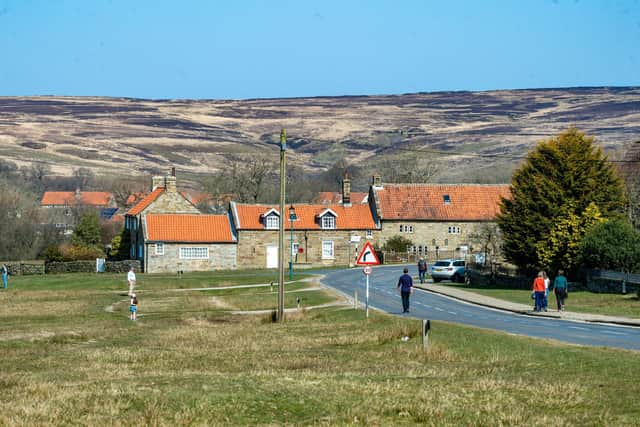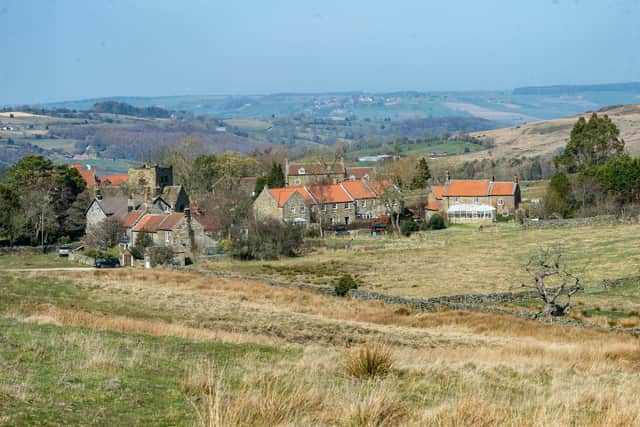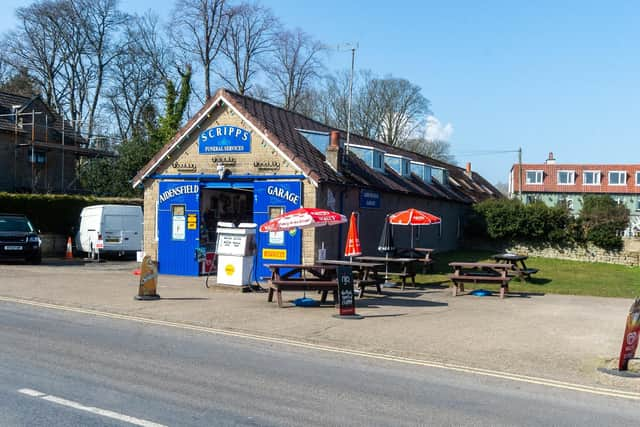Yorkshire Village Focus: Goathland - Heartbeat country but there's so much more to see
At its peak, Heartbeat drew an audience of almost 16m viewers – and made Goathland a magnet for fans, as they poured into the village every summer to visit the filming locations and take in the breathtaking beauty of the surrounding moorland.
They’re still coming. Not as many as when the series was in its heyday, but a steady trade of Heartbeat tourists continues thanks to lingering affection for a much-loved series and repeats of its 372 episodes on Freeview channels.
Advertisement
Hide AdAdvertisement
Hide AdAnd Goathland is as glad to welcome them as it always was. The village embraces its alter ego of Aidensfield cheerfully, with reminders of the series everywhere in memorabilia on sale in shops and pictures of the cast, not least William Simons, who played PC Alf Ventress from the first episode to the last. He grew so fond of Goathland during filming that he made his home there for several years.


If the Heartbeat visitors need increasingly long memories to remember when the show was just about the most popular television drama in Britain, Goathland’s starring role in an even bigger screen hit brings much younger fans to the village.
Its station on the North Yorkshire Moors Railway was transformed into Hogsmeade in Harry Potter and the Philosopher’s Stone, the 2001 film which was the first adapted from J K Rowling’s worldwide best-selling books about the boy wizard, who arrived with his friends aboard the Hogwarts Express.
John Bruce has been the volunteer stationmaster at Goathland since 1979 and is always glad to see both the Harry Potter and Heartbeat fans aboard Britain’s most popular heritage railway, which carries 300,000 passengers a year and runs on the main line into Whitby, about nine miles away.
Advertisement
Hide AdAdvertisement
Hide AdHe said: “We see the kids turning up with Harry Potter scarves and getting their photos taken and there are even Harry Potter tours. Prior to Covid we were getting coach parties turning up from Spain and doing a circuit, taking in ourselves and Alnick Castle and other locations.


“The Heartbeat influence is still there. We were getting vast numbers of visitors from Australia, New Zealand, Denmark, Sweden and Norway, where it’s extremely popular. People have very fond memories of it, because it was a very pleasant series that people enjoyed.
“Heartbeat itself took not just the railway, but the whole area through a couple of recessions and foot and mouth. It contributed to Goathland’s businesses immensely.”
So does the railway. Quaint Goathland station, with its iron footbridge spanning the tracks, is one of the most popular stops on the line for passengers breaking their journey to explore the village.
Advertisement
Hide AdAdvertisement
Hide AdGoathland is at the heart of the railway’s story. Two years after the line was shut by British Rail in 1965, a packed public meeting in Goathland Parish Hall was the beginning of the preservation society that got trains running again, opening to the public in 1973.


John started volunteering on the railway in 1969 and was there when the dream of restoring steam trains to the line became a reality. It takes a lot of volunteer effort – and money – to keep the railway running.
A measure of that is the £1.26m it cost earlier this year to install two new bridges at Goathland to carry the railway over Eller Beck, replacing those that had been in place for 150 years.
Whether by rail or by bus, to explore film locations or simply to enjoy the scenery, visitors have long flocked to Goathland.
Advertisement
Hide AdAdvertisement
Hide AdIn addition to those wandering around the village, browsing in the Post Office and gift shop, having a drink at The Goathland Hotel, or snapping pictures of the buildings overlooking the green, so familiar from Heartbeat, it is a favourite destination for walkers exploring riverside trails or heading for the high moors.
This year, the moors that surround the village have put on a spectacular show, according to Hannah Richardson, whose family have run The Goathland Hotel since 1985.
“I’ve never seen the heather moors as good for a long time. We’ve had heather beetle for the last few summers, which diminished how much the heather bloomed, but this year the bloom arrived early, I guess because of the heatwave, and it’s still looking fantastic now.”
The heather is part of Goathland’s magic – and so is its feeling of being part of the moors themselves.
Advertisement
Hide AdAdvertisement
Hide AdHannah said: “Goathland is accessible. Most of the villages are in the valleys right next to the side of the rivers. Goathland was always built as a tourist area, so everywhere you go you’ve got the views. It’s not as though you’ve got to climb to the top of the hills or get out of the valleys.
“Everywhere you go in Goathland, you’ve got gorgeous views for miles up and down the valleys and of the moors, so for moorland, Goathland is the most accessible place. The moorland comes right into the village, you don’t have a trek a couple of miles out. We are part of it. It is an amazing place.”
PANEL
Goathland derives its name from the Old English Godeland, meaning “God’s land”.
It has been a popular tourist destination since the Victorian era, when the railway opened up the North Yorkshire moors to visitors. Then as now, one of its must-see features is the Mallyan Spout, a towering waterfall tumbling more than 60ft, which is a short walk from the centre of the village.
Advertisement
Hide AdAdvertisement
Hide AdWalking routes around the area include the three-and-a-half mile rail trail from Goathland to Grosmont along the route of the original line built by railway pioneer George Stephenson, and the path to the nearby hamlet of Beck Hole.
Ends